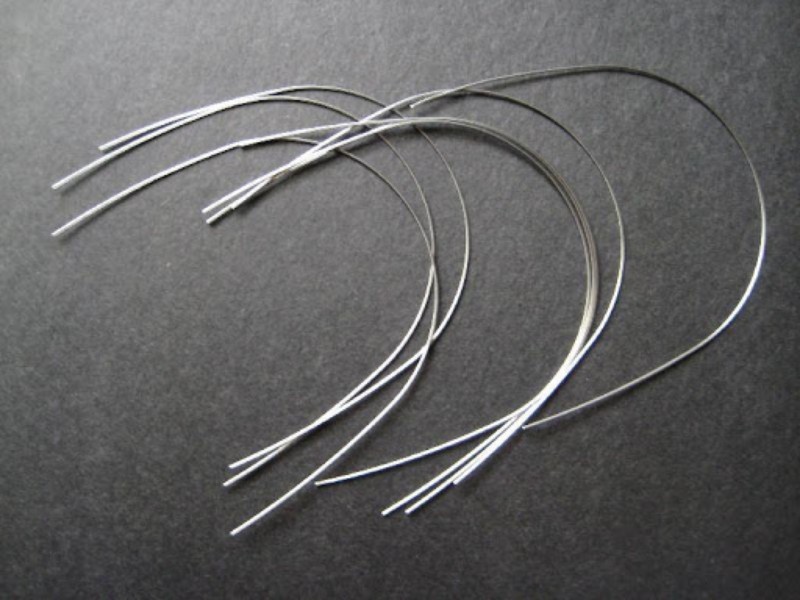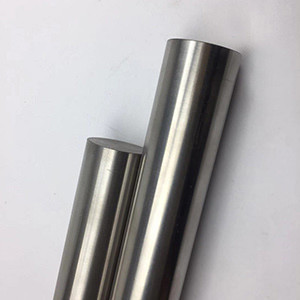Nickel titanium alloy is useful in clinical orthodontics because of its exceptional springiness.And as an ideal orthodontic material, the NiTi Arch Wire provide higher elasticity with lower rigidity, so it shows excellent effect in treating with NiTi Arch Wire gentle & consistent recovery force and bring a much shorter therapeutic period.
There are two major phases in the Nitinol wires. The austenitic phase has the ordered body centered cubic structure that occurs at high temperatures and low stresses. The martensitic phase has a distorted monoclinic, triclinic or hexagonal structure that forms at low temperature a high stress. The shape memory characteristics of the nitinolalloys are associated with a reversible transformation between the austenitic and martensitic phases. The martensitic phase forms from the austenitic phase over a certain transformation temperature range or when the stress is increased above some appropriate levels. The difference in the temperature ranges for the forward transformation from the martensitic phase to the austenitic phase, and for the reverse transformation, is termed Hysteresis. For a nitinolarchwire to possess shape memory, the transformation of the phases must be completed at the temperature of the oral environment.
Super-elastic NiTi wire can be deflected 1.6 times as far as Nitinol while producing only 36% of the force as demonstrated by Burstone et al. The new super elastic NiTi wires (A-NiTi) are significantly different from earlier work-hardened NiTi (M-NiTi) wires and from Stainless Steel. Their super elasticity assures light, constant force at mouth temperature regardless of the amount of activation. Shape memory allows easy arch wire placement at lower temperatures, while the wires are in their martensitic phase. The combination of super elasticity and shape memory makes these wires quite comfortable for patients, even as rectangular initial arch wires. Non-linear unloading shows a rapid initial drop in the force applied to the teeth, implying that less force is delivered with a greater activation.
Since stiffness increases and the wire become more efficient toward the end of movement, the clinician should not change the wire too often. A two-month appointment interval is usually sufficient, although treatment can be expedited if necessary by simply untying and retying the arch wires at monthly intervals, which will return them to their initial activation level. To take advantage of the temperature sensitivity of A-NiTI wires, orthodontists may want to advise their patients to alternate a cold drink with a hot meal once a day. Theoretically, the cold drink will cause the wires to enter their plastic, martensitic phase and to momentarily self-adjust in the bracket slots as the teeth move between appointments. Chinese and Japanese NiTi has unique characteristics and offers significant potential in the design of orthodontic appliances. These possess excellent spring back, shape memory and super elasticity.
Nickel-titanium alloys have shown a growing evolution, from the first samples with distinctive martensitic characteristics until the current ones, with thermoelastic and superelastic properties.NiTi Arch Wire
Recent advances in nitinol alloys have resulted in varied array of wire that exhibit a wide spectrum of properties. Presently the orthodontist may select, from all the available wire types, one that best meets the demands of a clinical situation.As a supplier and manufacturer of special metals , XOT Metals offers a highly diversified product portfolio of Nitinol trained wires, Nitinol springs and components, serving any need around industrial and medical applications.


